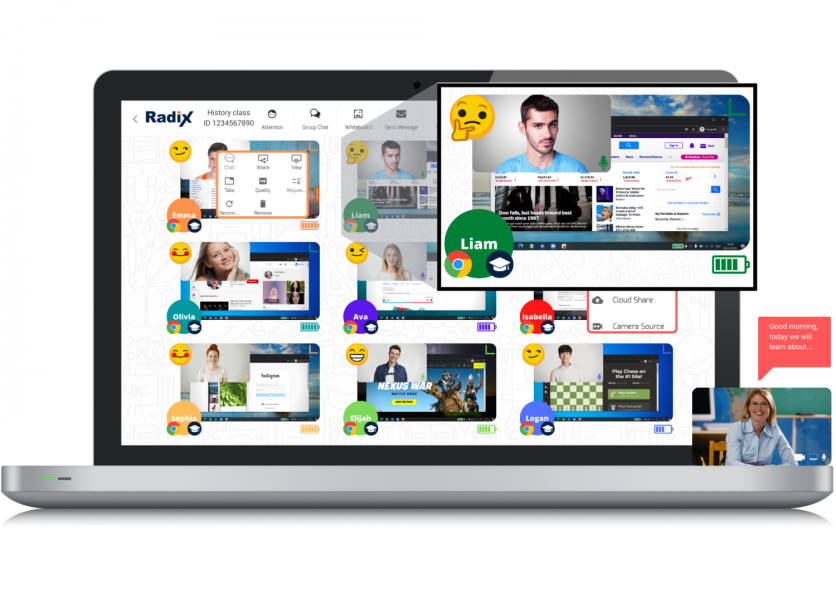
It's no secret that the Covid-19 created a wave of technological innovations and fast-tracked digital transformation in many verticals, especially in education. The demand for online learning and remote work compelled educational institutions and organizations to swiftly adopt new technological trends, such as virtual classrooms, video conferencing, collaboration tools and social media applications. This unprecedented transformation not only defined the pandemic period, but also continued well beyond it.
While educational institutions worldwide predominantly returned to traditional classroom settings, they continued the use of devices, such as mobile phones and laptops for learning and collaboration, extending even beyond school hours. Simultaneously, institutions are upgrading these devices to harness the full potential of cutting-edge technological advancements.
Given the current trends in the use of technologies in the classrooms, a dynamic approach to device management has become integral to foster effective education in the post-Covid era, says Nadav Avni, Chief Marketing Officer at Radix, a leading provider of end-to-end device management solutions.
Digital transformation trends in education
Covid brought a once-in-a lifetime opportunity to heavily invest in EdTech, says Avni. During the pandemic, tech adoption was quick among schools in the developed countries in the West, while the rest of the world also followed at a remarkable pace. As per the report from Morgan Stanley, the global education market is slated to reach an estimated $8 trillion in value by 2030 from $6 trillion in 2022. Research conducted during the pandemic underscored the effectiveness of online learning in STEM subjects, revealing the potential of collaborative digital platforms in enhancing comprehension and skill development
Post pandemic, digital transformation became the new standard for many schools. For example, to make learning more engaging, many schools are replacing projectors with interactive flat panels, rich with software stack. Researchers have found that the use of interactive flat panels in the classroom encourage learning through interactivity, enhance student engagement, provide better feedback, and foster greater participation and inclusivity. The use of AR/VR is also emerging as a trend to impart more immersive learning, especially in areas like studying about a historical place or analyzing the anatomy of human body.
Ensuring safe and secure device management in Radix's way
In the initial stages of the pandemic, the primary focus was to equip students with digital devices with internet connection enabling, them to connect to video conference platforms to meet with the teacher and other students. Concurrently, efforts were also made to provide students with online access to learning tools to solidify the online learning experience. Later, as schools resumed to traditional classroom settings, a majority of them continued the use of devices to enhance learning experience. Thus, in the post Covid era, embracing digital transformation and ensuring digital safety became the new priorities for schools, says Avni.
"To succeed in this digital transformation journey, educational institutions should provide teachers with the tools to facilitate efficient collaborative learning, while monitoring students' activity and ensuring their digital safety. In addition, there should be a way to monitor the use of many online learning tools that students can access in school and at home," Avni said.
Radix delivers cutting-edge device and classroom management solutions, consolidating all devices, processes and stakeholders in one easy-to-use management platform. Their device management platform is OS- and device-agnostic covering all the management aspects of a device: app management, configuration and settings management, remote support, OTA firmware update, monitoring and analysis (telemetry), and more. This helps schools keep their devices healthy, patched and tuned to their mission, while reducing operational complexity. It also saves time and money, and in turn, increases the overall performance of the institution, Avni added.
The classroom management solution from Radix is a hybrid one with video conference and learning management capabilities, enabling teachers to facilitate efficient collaborative learning and keep the classroom pulse by monitoring students' activity and maintain their digital safety, the Avni further explained.
Device-as-a-Service to future-proof classrooms
As the digital technology landscape evolves further, educational institutions are constantly expanding the fleet of devices they own. Radix is promoting a concept Device-as-a-Service (DaaS) for schools, whereby devices can be leased, paying a monthly or an annual fee to a service provider rather than continuing to acquire and maintain individual devices one-by-one.
In this scenario, the service provider would use Radix's platform to manage all the relevant software stack, on-going maintenance and warranty to ensure that the devices will stay healthy, patched and tuned to their mission. With over 31 years of experience in the education space, Radix now serves 57 countries and all 50 US states. Radix's classroom management solution is serving 20,000 organizations worldwide helping to facilitate remote, hybrid and in-person learning and training.
ⓒ 2025 TECHTIMES.com All rights reserved. Do not reproduce without permission.




